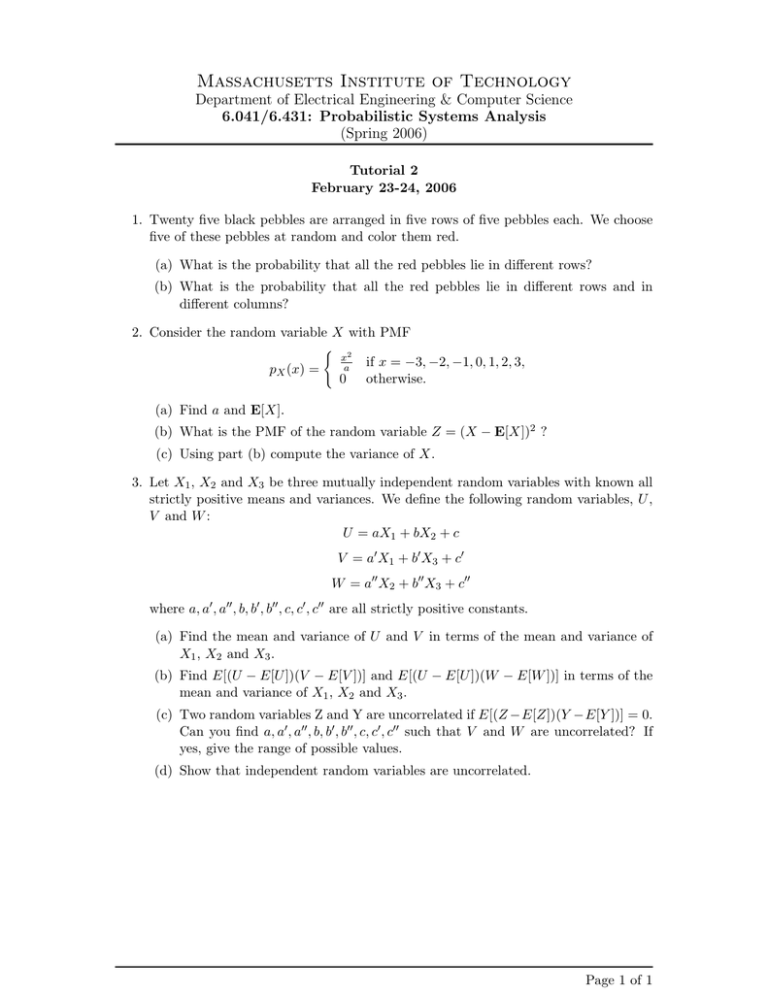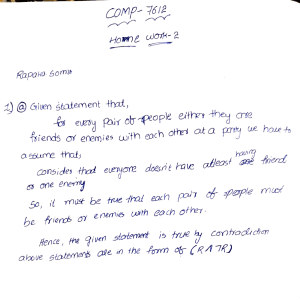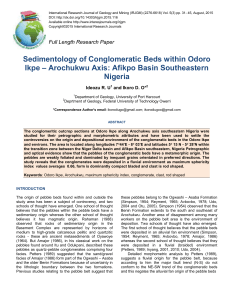Massachusetts Institute of Technology
advertisement

Massachusetts Institute of Technology Department of Electrical Engineering & Computer Science 6.041/6.431: Probabilistic Systems Analysis (Spring 2006) Tutorial 2 February 23-24, 2006 1. Twenty five black pebbles are arranged in five rows of five pebbles each. We choose five of these pebbles at random and color them red. (a) What is the probability that all the red pebbles lie in different rows? (b) What is the probability that all the red pebbles lie in different rows and in different columns? 2. Consider the random variable X with PMF pX (x) = ( x2 a 0 if x = −3, −2, −1, 0, 1, 2, 3, otherwise. (a) Find a and E[X]. (b) What is the PMF of the random variable Z = (X − E[X])2 ? (c) Using part (b) compute the variance of X. 3. Let X1 , X2 and X3 be three mutually independent random variables with known all strictly positive means and variances. We define the following random variables, U , V and W : U = aX1 + bX2 + c V = a′ X1 + b′ X3 + c′ W = a′′ X2 + b′′ X3 + c′′ where a, a′ , a′′ , b, b′ , b′′ , c, c′ , c′′ are all strictly positive constants. (a) Find the mean and variance of U and V in terms of the mean and variance of X1 , X2 and X3 . (b) Find E[(U − E[U ])(V − E[V ])] and E[(U − E[U ])(W − E[W ])] in terms of the mean and variance of X1 , X2 and X3 . (c) Two random variables Z and Y are uncorrelated if E[(Z −E[Z])(Y −E[Y ])] = 0. Can you find a, a′ , a′′ , b, b′ , b′′ , c, c′ , c′′ such that V and W are uncorrelated? If yes, give the range of possible values. (d) Show that independent random variables are uncorrelated. Page 1 of 1





